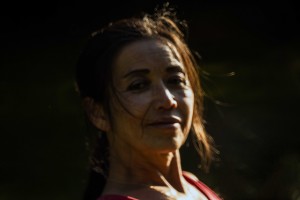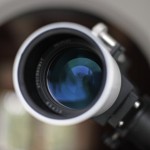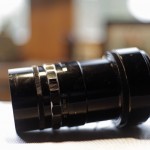I experiment a bit with an Rubinar and a MTO Russentonne 500mm lens, which I recently acquired second-hand. Here a snapshot fully manual settings with the RT 50 f/8 (and lots of light in Southern France).
The Beehive Cluster, also known as M44, NGC 2632, or Cr 189, is an open cluster in the constellation Cancer and an easy target visible to the naked eye. It is perfect compare the quality for astrophotography:
- MTO (Russentonne) – 1:8.0 500 mm
- MC Rubinar – 1:5.6 500 mm
- against a 80mm triplet APO – 1:6 600 mm
The MTO (Russentonne) is a single Maksutov achromatic corrector, whereas the Rubinar uses 2 milder such full aperture plates, being slightly shorter, heavier and ultimately better corrected. According to the website communist cameras its specification are as following.
MTO (Russentonne)
Lens Mount: K, M42x1 (M39)
Manufacturer: MTO (Logo LZOS, Lutkarino)
Dimensions: Diameter: 10.2cm, Length:71cm
Finish: black
Click Stops: none
weight: 1520gm
Diaphragm Type: fixed f8
Elements/groups 4/3
Serial no: M700746
Rubinar 500 f5.6
These are a new design with Macro performance. This lens was originally produced in Pentax K mount and then in M42. They are very uncommon in K mount. It comes in a square leather case with front and rear lens cape, a hood and an 87mm 4X ND filter and a yellow filter.
Technical Specifications
Lens Mount: K, M42
Manufacturer: LZOS (Logo LZOS, Lutkarino)
Dimensions: Diameter: 113mm, Length: 130mm
Finish: black
Click Stops: none
weight: 1.6kg
Diaphragm Type: fixed f5.6
Elements/groups
Serial no: none
Stars move “rule of 600”
Like with any other movement, what we care about is how much they move on the sensor during exposure: A movement that occurs only within a single pixel is not a movement the sensor can capture, i.e. the movement appears frozen.
But when movement takes a point across several pixels during the exposure, it will be visible as movement blur, in this case star trails. A rule like the “rule of 600” is similar in spirit to the “rule of 1/focal length” for handheld exposure, in that it attempts to give exposure times that yield approximately the same movement blur for most focal lengths.
The derivation is fairly simple: The sky rotates 360 degrees in 24 hours, or 0.0042 arc degrees per second. For a lens projecting a rectilinear image (focused at infinity), the angle of view (α) can be calculated from the chosen dimension (d), i.e. the size of the film (or sensor) in the direction measured, and effective focal length (f) as:
- α = 2 arctan (d/2f)
- or α = 180/pi * d/f
- or α = 57 * d/f degrees.
Assuming a full size frame camera Canon 5D ( 36,8 x 23,9 mm) and a 28 mm lens, we have a 66.7 degree horizontal view. Assuming a 21 Mpx sensor (5616×3744, e.g. my Canon 5D), those 66.7 degrees are projected on to 5616 horizontal pixels, giving 84.2 pixels per degree.
Assuming a 28mm lens, the “rule of 600” gives 600/28mm = 21,3 seconds exposure. In 21,3 seconds the sky will move ~0.1 degrees.
For our 21 Mpx full frame camera with a 28mm lens, 0.1 degrees translates to 8.4 pixels.
By the 600 rule, 8.5 pixels represent the maximum acceptable movement blur before star points turn into star trails in our case:
- MTO (Russentonne) – 1:8.0 500 mm – 1.2 seconds,
- MC Rubinar – 1:5.6 500 mm – 1.2 seconds,
- TMB 80 Triplet – 1:6 600 mm – 1.2 second.
If we were using a 1.6x crop sensor with the same 24Mpx resolution (e.g. Canon 60da) “rule of 400”, but I suggest using “rule of 600” (or a stricter version with a smaller numerator) with the equivalent rather than the actual focal length. (e.g. 16mm on a 1.5x crop sensor is equivalent to 24mm. Different stars move at different speeds relative to the Earth. The calculation above is for the worst-case scenario, when the picture includes stars that move along the celestial equator. Use a smaller number if you want less blur, but a higher number might be acceptable if you shoot a close crop of Polaris, use a low-resolution camera and/or target a low-resolution output format.The “rule of 600” is like “1/focal length” for handheld shutter speed and “d/1500” for circle of confusion: The formulas ignore the resolution. But if you want to use the extra resolution from a high-resolution camera, e.g. by cropping more, printing larger, viewing closer, or viewing at 100% on the computer, the higher resolution will reveal more blur, so you need a stricter rule.
The only perfect solution is a “perfectly aligned tracking equatorial mount” and there ain’t no such thing. A discussion of the pros and cons (and math) can be found here: http://blog.starcircleacademy.com/2012/06/600-rule/ and a more general discussion of star trails at http://blog.starcircleacademy.com/startrails/




